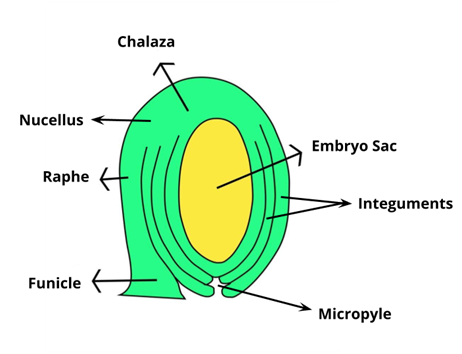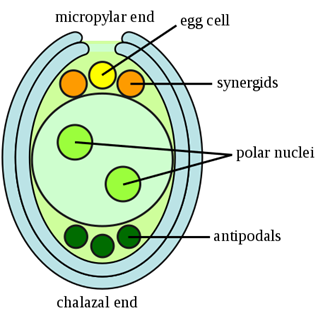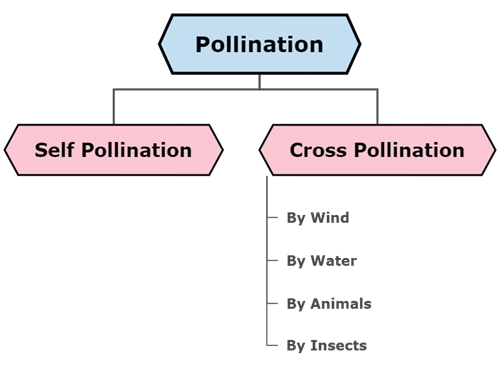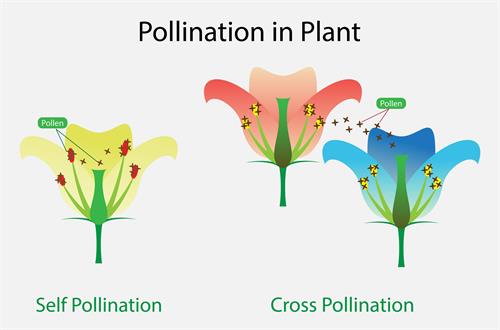PDF chapter test TRY NOW
- The nucellus is the essential part of the ovule, surrounded by two integuments and has a micropyle opening.
- A stalk known as the funiculus connects the ovule to the ovary wall.
- Chalaza is the basal part.

Anatropous ovule
Embryo sac:

Structure of embryo sac
The embryo sac of the ovule contains 7\ cells and 8\ nuclei located within the nucellus.
- Out of the seven cells, three cells are located at the micropylar end and form the egg apparatus.
- The remaining three cells are at the chalaza end form the antipodal cells.
- The remaining two nuclei are called polar nuclei and are present at the centre.
- In the egg apparatus, one forms the female gamete or egg cell, and the remaining two cells are the synergids.
Process of sexual reproduction in flowering plants involves two processes:
- Pollination
- Fertilization
Pollination and its types:
The transfer of pollen grains from the anther to the stigma of a flower is called pollination.
Types of pollination:
Pollination is of two types. They are:
- Self-pollination
- Cross pollination


Types of pollination
Importance of pollination:
- It leads to fertilization which results in the formation if fruits and seeds.
- As a result of pollination new varieties of plants are formed by the combination of genes (in cross pollination).
Reference:
https://commons.wikimedia.org/wiki/File:Embryosac-en.svg
https://commons.wikimedia.org/wiki/File:Ovule_morphology_anatropous.svg
